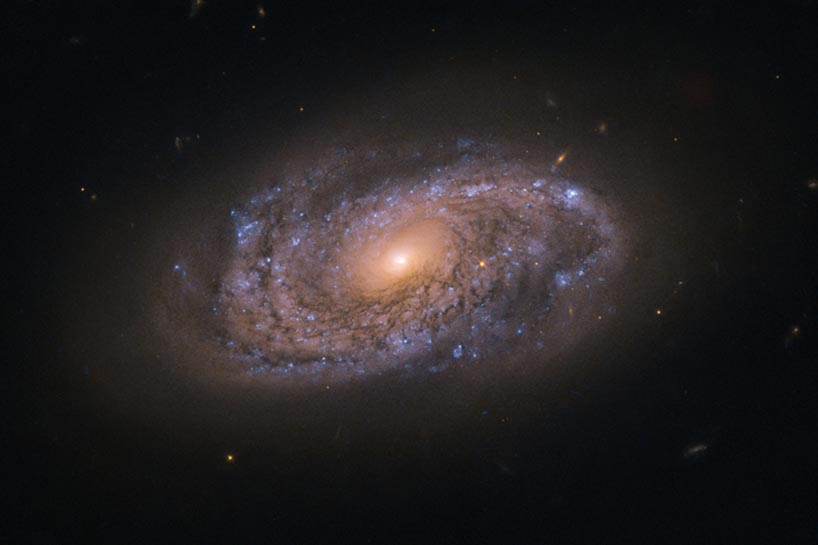
Spiral Galaxy
RA 09h 32m 06.25s Dec +08° 26' 30.86
Leo
126 million light-years
12.5
1.3 × 0.71 arcmin
3.21 x 3.38 arcminutes
North is 79.7° right of vertical
ESA/Hubble & NASA, A Filippenko
April 13, 2020
ABOUT
THIS IMAGE:
This image depicts a swirling spiral galaxy named NGC 2906.
The blue speckles seen scattered across this galaxy are massive young stars, which emit hot, blue-tinged radiation as they burn through their fuel at an immense rate. The swathes of orange are a mix of older stars that have swollen and cooled, and low-mass stars that were never especially hot to begin with. Owing to their lower temperatures, these stars emit a cooler, reddish, radiation.
This image of NGC 2906 was captured by the NASA/ESA Hubble Space Telescope's Wide Field Camera 3, an instrument installed on Hubble in 2009 during the telescope's fourth servicing mission. Hubble observed this galaxy on the hunt for fading light from recent, nearby occurrences of objects known as supernovae.
From Wikipedia:
NGC 2906 is a spiral galaxy located in the constellation Leo. It is located at a distance of circa 120 million light years from Earth, which, given its apparent dimensions, means that NGC 2906 is about 75,000 light years across. It was discovered by William Herschel on December 28, 1785.
The galaxy is characterized by a normal star formation rate, which has been calculated to be 0.8 M☉ per year. The total mass of the galaxy is estimated to be 4×1010 M☉. A total of 241 HII regions have been identified in the galaxy.
One supernova has been observed in NGC 2906, SN 2005ip. The supernova was discovered by T. Boles on November 6, 2005, with a 0.35m refractor, with an estimated apparent magnitude 15.5 and was identified as a type II supernova, probably within a few weeks past explosion. As the supernova declined in brightness, it reached a plateau that lasted for a bit more than two years and its spectrum became dominated by narrow lines (IIn), an unsual feature of supernovae, that was attributed to the interaction of the supernova with dust located around it. It is also possible that the supernova created dust.
NGC
2906 is member of a group of galaxies, the NGC 2894 group. Other galaxies
identified as members of the cluster are NGC 2882, NGC 2894, and IC 450.